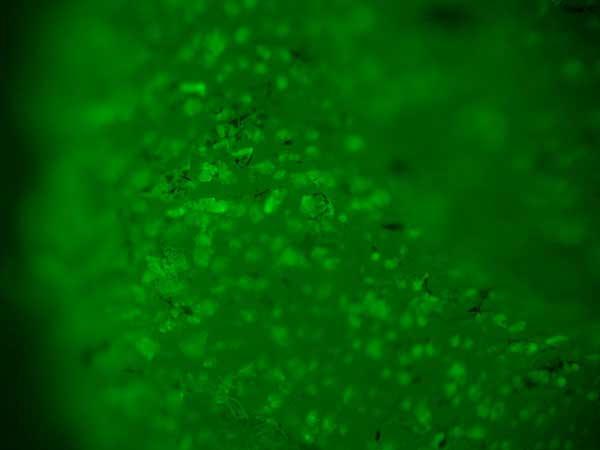Gene Therapy Approach for Ovarian Cancer Shows Encouraging Signs in Animal Model
, by NCI Staff
A single injection of a gene therapy viral vector can deliver effective and long-lasting levels of a protein that inhibits the growth of some mouse tumors derived from patients with recurrent ovarian cancer, according to a new study published July 27 in the Proceedings of the National Academy of Sciences.
Mullerian inhibiting substance (MIS) is a protein produced in the male testis during early development. In the developing male fetus, precursor cells that would become the fallopian tubes, uterus, cervix, and vagina of a female, express receptors to MIS, which causes these tissues to regress.
"We hypothesized that since ovarian cancer cells still express the receptors to MIS, why not use the hormone that causes regression in the fetus to target these cells?" asked David Pépin, Ph.D., of Massachusetts General Hospital and lead author of the study. "Cancer cells often behave a lot like cells in early development."
MIS has been of interest to researchers as a potential anticancer agent for several decades. Manufacturing MIS in the lab, however, has proven to be particularly difficult, and not enough could be produced to test this hypothesis in preclinical studies, explained the study’s senior author, Patricia Donahoe, M.D., also of Massachusetts General Hospital. However, in 2013, Drs. Donahoe and Pépin published a study in which they were able to engineer a slightly modified version of MIS that produced a better yield and a more biologically active version of the protein.
In the new study, the researchers first tested the engineered MIS in cell lines from patients with recurrent ovarian cancer. Seeing positive responses, they introduced this modified MIS into a virus capable of coaxing target cells to produce the protein (that is, a viral vector). The viral vector, called AAV9—designed by study co-author Guangping Gao, Ph.D., director of the Gene Therapy Program at the University of Massachusetts—allowed them to deliver the gene for modified MIS into mouse tissues which, in turn, produced the therapeutic protein.
"The AAV9 does not hit the tumor directly," explained Dr. Donahoe. "It gets expressed in muscle and other organs, and so the patients themselves become a bioreactor for the production of MIS, which then acts on the tumor."
Growth of tumors in three of the five mice tested—all of which had implanted tumors from patients with recurrent ovarian cancer—was significantly inhibited by MIS.
These results are especially encouraging given the high mortality rate for ovarian cancer and the current lack of therapeutic options, said Dr. Pépin. "For the most part, we have been using the same chemotherapy for the last 20 years."
Dr. Pépin envisions ultimately using the gene therapy in concert with chemotherapy. MIS inhibits the growth of ovarian cancer cells, he said, and other studies suggest that it also seems to be particularly good at inhibiting cancer stem cells.
"While chemotherapy is effective against the bulk of the tumor, it largely spares or even stimulates some cancer stem cells, the very cells responsive to MIS, suggesting a mechanism for synergy."
Advantages of the gene therapy include the fact that "we can get a permanent expression of the therapeutic protein at levels that would otherwise be difficult to achieve with injected proteins," said Dr. Pépin. There was also no evidence of side effects, he added. Furthermore, the AAV9 vector does not integrate into the host genome, so there is no risk of it disrupting a gene or causing cancer, he explained.
"It's much safer than previous gene therapy viruses," he said.
Drs. Donahoe and Pépin are currently seeking commercial partners to produce the AAV9 gene therapy to test in a clinical trial.
